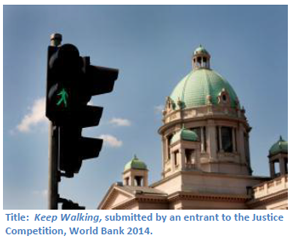
’the involvement of Parliament in judicial appointments risks leading to a politicization of the appointments and, especially for judges at the lower level courts, it is difficult to see the added value of a parliamentary procedure.612
Stakeholders are aware of this deficiency, and constitutional amendments are under consideration. As an elegant interim measure, the NJRS states that only one candidate should be proposed per position, depriving the National Assembly of its ability to select candidates among several. Nonetheless, the amendments should proceed as a priority, and would be a significant positive step to enshrine judicial independence and the separation of powers in Serbia.
As an elegant interim measure, the NJRS states that only one candidate should be proposed per position, depriving the National Assembly of its ability to select candidates among several. Nonetheless, the amendments should proceed as a priority, and would be a significant positive step to enshrine judicial independence and the separation of powers in Serbia.
Box 17: From the Law on the Organization of Courts
The duties of Court Presidents include: representing the court, managing court administration, responsibility for proper and timely court operations by ensuring legality, order, and accuracy in the court; ordering the removal of irregularities, preventing procrastination in the court’s work, designating the panel of attorneys to provide free legal assistance, safeguarding the independence of judges and the credibility of the court, and other tasks set forth by law and the Court Rules of Procedure.
In Serbia, the court administration for which Court Presidents are responsible consists of tasks that support the exercising of judicial power, in particular: the organizing of internal operations, summoning and assignment of lay judges, activities related to standing expert witnesses and court interpreters, review of complaints and petitions, keeping statistics and drafting reports, enforcement of penal and minor offences sanctions, financial and material business of the court, and certification of documents for use abroad. The court administration is also regulated in more detail by the Court Rules of Procedure.